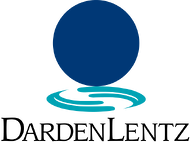12 ways to connect with customers, generate leads and conduct research in a difficult environment.
In the interest of public health, your trade shows and conferences have been cancelled. It’s an essential move—but what do you do if these shows are essential to your marketing strategy. If you’re in technology, or, ironically, in healthcare, it’s likely that they are. So, what do you do?
Developing Alternative Strategies
For weeks we’ve been working with our healthcare clients to put alternative strategies in place as, one by one, the diagnostics, device, and informatics shows were cancelled. If you’re still working on your alternative strategy and tactics, consider this approach…
Your show objectives likely included engaging current customers, developing new leads, and perhaps gathering VOC from show attendees. Have you thought about your customers’ objectives? Why was she attending the show? If she’s like most medical/scientific conference attendees, her goals probably included:
Education: Insight into new research, technology advances, techniques or trends—perhaps even filling requirements for CE/CME credit
Product information: Information to help make or contribute to purchasing decisions
Networking: Relationships to help her organization or her own career
Look for Ways to Align Solutions to Your Customer’s Missed Opportunities With Your Own
How can helping her help you? Below are a dozen ways you can do just that. Some are low cost, some involve significant expense. But, the one positive side of having your shows cancelled is that you may have freed up some budget—assuming at least some of your expenses were refundable.
Engaging With Your Existing Customers
1. Virtual Webinars: If you were planning symposia at the shows, convert them to virtual webinars. Many of your customers will have extra time on their hands and will welcome the opportunity to “gather” virtually with colleagues during this time of isolation. Of course, if your customers are clinicians, consider their specialty and possible COVID 19 responsibilities before planning. (Consider these DIY resources: GoToWebinar and Livestorm—the latter is offering a discount during the COVID 19 crisis.)
2. Reformat Research: Convert research posters and presentations to digital content to share with your customers via your website and email. These same assets can be used for lead nurturing, in #7 below.
3. Plan Dinner Programs: Develop a small-group peer-to-peer dinner program that can be deployed when isolation guidelines ease. Start the process of creating a dynamic presentation or video and have it in the can and ready to go. Similarly, recruit speakers now, and develop the list of customers you’d reach out to first.
4. CE/CME Programs: If you have a CE/CME program, this is the time to ramp it up. Increase promotion of your courses and increase frequency. For the most part, this will apply only to clinicians who do not have COVID 19 responsibilities (e.g. dentists, dermatologists, etc., not ER docs); however, some hospitals are asking high-risk clinicians (such as those over 60 or with underlying health conditions) to stay home for their own safety. These highly motivated people will need something to focus on at home.
5. Loyalty/Tribe Programs: Brainstorm with your agency about building a tribe or loyalty program. While always an effective strategy, this is even more important when you need excuses and methods to engage with your customers. Short term, it keeps customers engaged with your brand. Longer term, it can develop loyalty that can resist competitive incursion. If the tribe engages in collaborative activities, as would a user group, for example, this also provides your customers with networking opportunities. Plan these as virtual in the short term, or wait until things get back to normal to deploy them live.
6. Digital Customer Bulletin: Create a simple newsletter that features all the news your customers would have learned about if they’d had a chance to visit your booth—product launch information, summaries of symposia, links to new studies, product literature, etc.
Develop New Leads
7. Lead Nurturing Email Campaign: If you were going to use your booth to build your prospect list, enquire to see if cancelled shows are allowing you to purchase email lists for registered attendees. Then begin a lead nurturing program featuring educational content and product information, such as:
- Virtual product demos
- Product Q/A sessions with KOLs or product experts
- Repurpose your booth video
- Scientific literature
- Subject-matter expert videos
- Product literature
8. Advertise: Shift funds to advertising–both digital and print (with a direct response focus). Digital is better for short term because a) lead times for placement are shorter and b) customers working virtually will have access to digital publications, while print publications may be delivered to their office. For print ads, make sure they’re not just brand focused but offer a direct response call to action that enables you to build leads. Both print and digital ads can recruit leads into your nurturing program.
9. Direct Mail: Not a good time to deploy direct mail—since so many are working from home. You can, however, use this time to design a campaign to deploy when things settle down.
Gather Voice of Customer Research
10. Online Surveys: If you were going to do in-booth surveys, consider taking them online. If you don’t have good list, consider contacting industry publications for rental/purchase. Try CAP Today or Clinical Lab News (AACC) for diagnostics, Imaging Technology News for imaging devices, etc. Use Survey Monkey to create and deploy your survey if you don’t have capabilities through Marketo, your CRM, or other programs.
11. Phone interviews: Replace in-person interviews with phone interviews. To recruit–If you don’t have an existing list—try: 1) Getting names and introductions from your sales team; 2) Use email because many are working from home and not reachable through office numbers 3) Use a recruiting agency, such as Opinion Access, or, for healthcare, HRA-Healthcare Research and Analytics. It’s not cheap, but they can get you to hard-to-reach people and handle all the administration, including honoraria, if needed. You may find that customers are more willing to give you their time and open up when they are outside the office.
12. Virtual Focus Groups: Larger research companies, like HRA, have virtual focus group capabilities that you can tap into. Again, these are expensive, but if research is critical, this may be a good option.
If you’re still stuck, or need help implementing an idea, we’d be happy to brainstorm with you virtually over a cup of coffee. It’s our pleasure–and there's no charge–as we believe we all need to support each other during this challenging time to ensure that, when it’s over, we can all return to a thriving economy! Contact us if we can help.
 Julia Darden is the Branding Strategist for DardenLentz, a B2B Marketing and Branding Agency focused on healthcare and technology, and she is the firm's managing partner. Julia is passionate about building memorable brands that connect emotionally with customers. She has successfully managed major creative and branding projects for leaders in the technology, diagnostics, medical device and medical informatics industries.
Julia Darden is the Branding Strategist for DardenLentz, a B2B Marketing and Branding Agency focused on healthcare and technology, and she is the firm's managing partner. Julia is passionate about building memorable brands that connect emotionally with customers. She has successfully managed major creative and branding projects for leaders in the technology, diagnostics, medical device and medical informatics industries.


